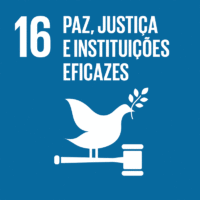Ciência-IUL
Comunicações
Descrição Detalhada da Comunicação
Hybrid Warfare: Above or Below the Threshold of Armed Conflict?
Título Evento
Soldiers and Hybrid War: The Role and Missions of Armed Forces in Below-Threshold Conflicts
Ano (publicação definitiva)
2021
Língua
Inglês
País
Hungria
Mais Informação
Web of Science®
Esta publicação não está indexada na Web of Science®
Scopus
Esta publicação não está indexada na Scopus
Google Scholar
Esta publicação não está indexada no Google Scholar
Abstract/Resumo
Hybrid warfare — also known as grey zone conflict or low-intensity conflict — is a reality and political and military leaders must be ready to confront and deter it. There is no common definition of the term and therefore it is correspondingly ambiguous. It is an amorphous definition for an amorphous strategy. While it is a blend of traditional and irregular tactics, hybrid warfare makes overt and covert use of a wide range of tools: military and civilian, conventional and unconventional. Hybrid warfare is an umbrella concept, a form of comprehensive warfare, a strategy, that includes a buquet of tactics, techniques, technologies and methods. Hybrid warfare operations, for which it is difficult to attribute responsibility and which are not specifically regulated by international law, fall below the threshold of armed conflict. Hybrid warfare blurs the lines between peace and war and is therefore questioned whether it should be considered below the threshold of armed conflict. Some hybrid warfare operations are convenient because are located in a twilight zone between peace and war and below the threshold of war and therefore they should not trigger a conventional/kinetic military response. Nevertheless, at the 2014 NATO Summit in Wales, the allies recognized that international law applies in cyberspace and that the impact of cyberattacks could be as harmful as a conventional attack. As a result, cyberdefense was recognized as part of NATO’s core task of collective defense. At the Warsaw Summit in 2016, the allies took further action to recognize cyberspace as a domain of operations just like the "classic" domains of air, land and sea. At the NATO summit held in Brussels in 2021, the allies reaffirmed that a cyber attack could trigger Article 5 of the Atlantic Charter: "an attack on one is an attack on all". This doctrinal position is of no small importance. The question is whether hybrid warfare should be considered an armed attack or use of force that, under treaty and customary international law, could trigger a military response or whether it falls below the threshold of damage and destruction resulting from a kinetic attack. This paper aims to shed light on theconsistency of the emerging doctrine on hybrid warfare with current international (humanitarian) law and its possible application.
Agradecimentos/Acknowledgements
--
Palavras-chave
NATO,cyber,geneva convention,international law,international humanitarian law,law of war,hybrid,ius cogens,jus cogens,ius ad bellum,jus ad bellum,ius in bellu,jus in bellum,war,confict,belarus,poland,migrats,security council,united nations,EU,UN,european Union,european commission,EC
Classificação Fields of Science and Technology
- Direito - Ciências Sociais
- Ciências Políticas - Ciências Sociais
- Outras Ciências Sociais - Ciências Sociais
Registos de financiamentos
| Referência de financiamento | Entidade Financiadora |
|---|---|
| SFRH/BD/136170/2018 | Fundação para a Ciência e a Tecnologia (FCT), Portugal |
Contribuições para os Objetivos do Desenvolvimento Sustentável das Nações Unidas
Com o objetivo de aumentar a investigação direcionada para o cumprimento dos Objetivos do Desenvolvimento Sustentável para 2030 das Nações Unidas, é disponibilizada no Ciência-IUL a possibilidade de associação, quando aplicável, dos artigos científicos aos Objetivos do Desenvolvimento Sustentável. Estes são os Objetivos do Desenvolvimento Sustentável identificados pelo(s) autor(es) para esta publicação. Para uma informação detalhada dos Objetivos do Desenvolvimento Sustentável, clique aqui.

 English
English

